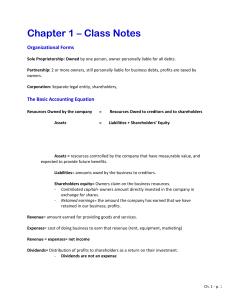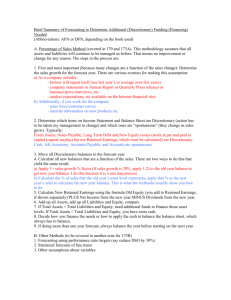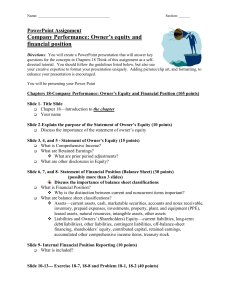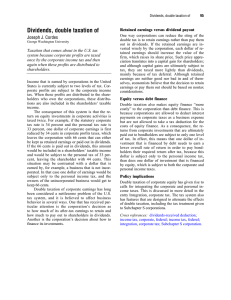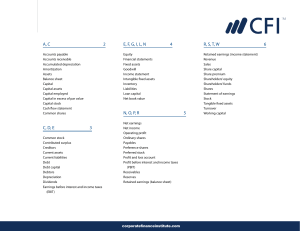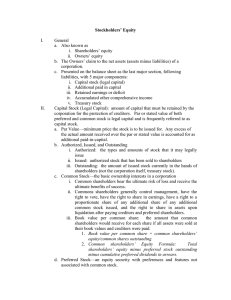15.511 Corporate Accounting June 9 , 2004
advertisement
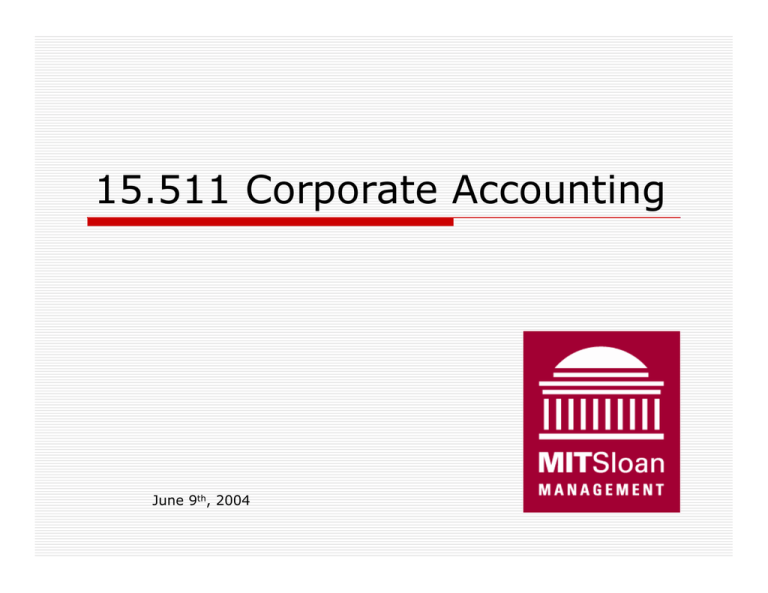
15.511 Corporate Accounting June 9th, 2004 Agenda: Recitation 1 Highlights of what we covered so far. Review of some technical items. Examples. Objective of Financial Accounting To communicate financial information to parties outside the business organization. Equity Investors Creditors Employees Suppliers Clients Understanding Business Operations Businesses have an accounting system that… Collects and processes financial information about the organization… Reports the information to decision makers and other interested parties… Insiders (Management) Outsiders (Investors, etc.) Tax Authorities (IRS, etc.) Understanding Business Operations Accounting System Financial Accounting Preparation of four basic financial statements and other disclosures for external decision makers. Managerial Accounting Preparation of detailed plans, forecasts, and reports for internal decision makers. Tax Accounting Preparation of forms in accordance with the relevant tax code for the tax authorities. Financial Accounting The four basic financial statements: Balance Sheet Income Statement Statement of Cash Flows Statement of Shareholders’ Equity Most companies prepare financial statements at the end of each year (called annual reports), at the end of each quarter (called quarterly reports), and following significant events (called current reports). The Balance Sheet Components of the Statement: Assets Economic benefits owned by the business as a result of past transactions. Liabilities Debt and other obligations of the business that result from past transactions. Shareholders’ Equity Residual claim of and financing provided by the owners of the business. The Balance Sheet Basic Accounting Equation: Assets = Liabilities + Shareholders’ Equity The Income Statement Three main groups: Revenues Sales Revenues Expenses Cost of Goods Sold (COGS) Selling, General and Administrative (SG&A) Research and Development (R&D) Interest Tax Net Income Statement of Cash Flows Reports the changes to other accounts which affect a change in the cash account on the balance sheet. The change in the cash account is usually not equal to net income. Revenues reported do not always equal cash collected. Expenses reported do not always equal cash paid. Statement of Cash Flows Indirect Method Starts with net income and makes adjustments to yield cash flows from operations. Relation to the Balance Sheet The sum of cash flows from operations (CFO), cash flows from investing (CFI), and cash flows from financing (CFF) must equal to the change in the cash account on the balance sheet. Statement of Shareholders’ Equity Three main components: Capital Contributions Common and preferred stock. Operating Transactions Earnings generated from assets financed by creditors and owners. Distributions Dividends and share repurchases. The residual claim is either distributed to owners or recognized under the shareholders’ equity account. Statement of Retained Earnings Income of the Enterprise: Distributed to shareholders. Dividends and share repurchases. Retained by enterprise. Retained earnings. Clean Surplus Equation: Beginning Retained Earnings + Net Income – Dividends = Ending Retained Earnings Notes Provide supplementary information about the financial condition of the company. Describe accounting rules applied. Provide additional detail about an item on the financial statements. Provide additional information about an item not on the financial statements. Journal v. Balance Sheet Equation The Balance Sheet Equation Method Intuitive. Not practical given many transactions. The Journal Method Transactions recorded as they occur under two categories (double entry). Debits Credits Periodic posting of accounts in general ledger. Text Book Problems 1-18: B/S 1-21: I/S Net Income = Increase in Assets – Increase in Liabilities – Increase in Contributed Capital + Dividends 2-20: B/S


